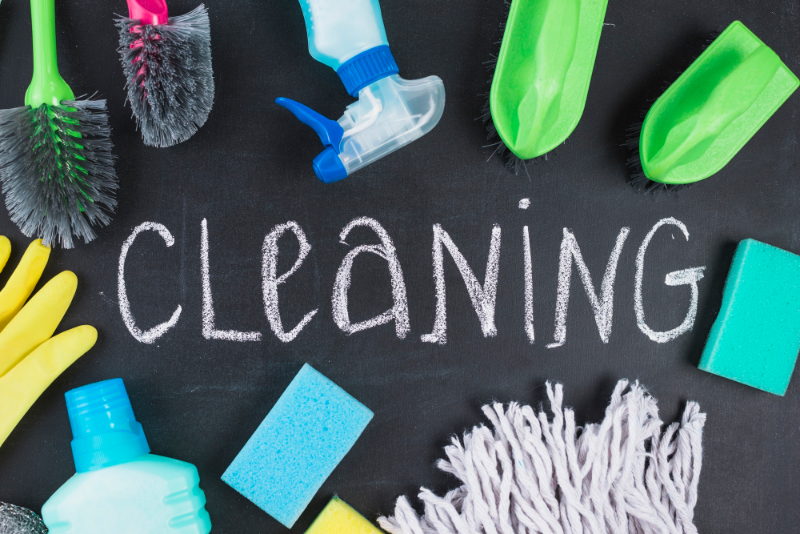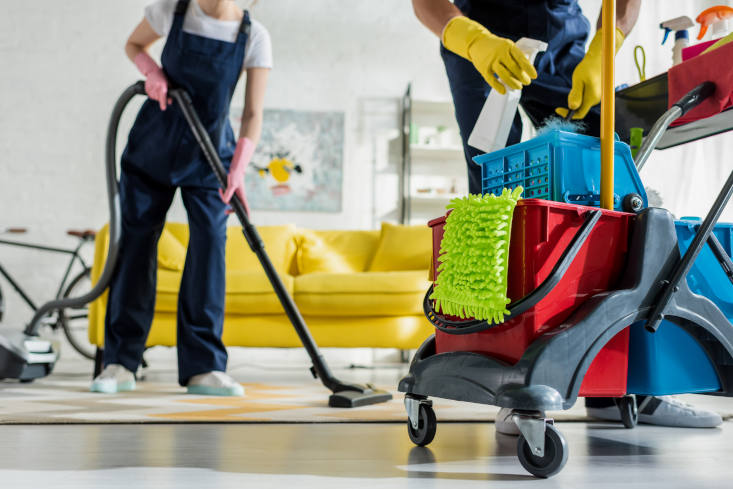Efficient Everyday Cleaning Techniques: Ideal Practices for Defrosted and Cleaned Every Few Months
Efficient Everyday Cleaning Techniques: Ideal Practices for Defrosted and Cleaned Every Few Months
Blog Article
Recognizing the Need for Extensively Sanitizing and Sterilizing Frequently Touched Surface Areas in High-Traffic Locations
In the realm of public health and safety, the precise disinfection and sanitization of often touched surfaces in high-traffic areas stand as critical steps in avoiding the spread of damaging microorganisms. By exploring the various facets of surface area sanitation, from the dangers associated with neglecting cleaning protocols to the effective approaches that can be used, a clearer understanding emerges of the essential duty these methods play in protecting public health.
Relevance of Surface Area Disinfection
Emphasizing the detailed sanitation of high-traffic surfaces is critical in preserving a hygienic setting and stopping the spread of dangerous microorganisms. High-touch surface areas such as door takes care of, light buttons, elevator switches, and kitchen counters function as reproducing premises for bacteria and infections. Routine disinfection of these surface areas is imperative to minimize the risk of contamination and transmission of ailments.
By executing a robust sanitation procedure, establishments and companies can create a more secure environment for staff members, visitors, and consumers. Correct surface sanitation not only minimizes the spread of infectious illness but additionally instills confidence in the sanitation and safety of the facilities. This proactive method shows a dedication to health and health, which is especially crucial in high-traffic locations where the likelihood of exposure to pathogens is heightened.
Additionally, surface area sanitation plays an essential function in total infection control approaches. Combined with hand hygiene practices, wearing masks, and maintaining physical distancing, complete sanitation of high-touch surface areas creates a thorough protection versus the transmission of dangerous microbes. Focusing on surface area sanitation is an essential component of an all natural approach to health and safety in shared spaces.
Risks of Overlooking Cleaning Practices
Overlooking extensive disinfection of high-traffic surfaces considerably increases the risk of viral and bacterial contamination, presenting a severe danger to the health and wellness and security of individuals often visiting these rooms. Failure to implement correct cleansing methods can result in the accumulation and spread of unsafe virus, including bacteria and infections, on frequently touched surface areas such as doorknobs, handrails, lift switches, and counter tops.

Furthermore, neglecting the value of extensive cleaning not just compromises the health of individuals yet likewise undermines initiatives to maintain a tidy and hygienic setting. It is important to identify the relevance of proper sanitation procedures in preventing the spread of infections and guarding public health and wellness.
Effective Sanitation Methods
To preserve ideal tidiness and lower the threat of contamination on high-traffic surfaces, employing effective disinfection techniques is necessary. One of the most efficient and common disinfection techniques is utilizing chemical anti-bacterials.
An additional reliable approach is using UV-C light. UV-C light has actually been revealed to be reliable in eliminating a vast array of microorganisms by disrupting their DNA structure, thus preventing them from duplicating. It is crucial to make use of UV-C light appropriately, making sure that the proper strength and exposure time are applied to attain the wanted disinfection Read More Here results.
Additionally, using heavy steam cleaning as a sanitation technique can be highly effective, particularly on surfaces that are heat-resistant. Go Here Vapor can permeate porous surface areas and kill microorganisms, viruses, and other virus efficiently. When using heavy steam cleaning, it is essential to make certain that the surface area reaches the called for temperature for an enough amount of time to ensure correct disinfection.
Effect On Public Health
The upkeep of high standards of tidiness and sanitation on high-traffic surfaces plays a vital role in securing public health. Often touched surface areas in locations with high footfall, such as doorknobs, hand rails, lift buttons, and washroom centers, work as breeding grounds for unsafe pathogens. Stopping working to adequately sanitize these surface areas can bring about the rapid spread of contagious conditions within areas. By implementing complete sanitation protocols, the risk of transmission of viruses, germs, and various other bacteria can be significantly decreased.
In high-traffic locations like airport terminals, institutions, medical facilities, and public transport systems, the effect of rigorous sanitation procedures can not be understated. Focusing on the sanitization of often touched surface areas is a positive approach to advertising public health and boosting the security of people in shared rooms.
Carrying Out Regular Cleaning Up Protocols
Immediately instituting and sticking to a consistent timetable of cleaning procedures is paramount for preserving the cleanliness and security of high-traffic surface areas. Regular cleansing protocols are necessary in avoiding the build-up of germs and microorganisms on regularly touched surfaces, particularly in locations with high foot traffic. By carrying out an organized method to cleansing, companies can efficiently minimize the threat of disease transmission and produce a much healthier setting for employees, customers, and the general public.
To develop an effective cleaning routine, it is critical to identify high-traffic areas that need regular focus. These locations may include doorknobs, handrails, elevator switches, bathroom centers, and common equipment. Carrying out a regular cleaning routine that targets these surface areas numerous times a day can considerably decrease the spread of harmful germs and viruses.
Moreover, making use of proper cleaner and anti-bacterials is crucial to making sure that surfaces are completely sanitized. Normal training of cleaning staff on proper cleansing strategies discover this and the importance of adherence to the cleansing timetable is additionally essential in keeping a sanitary atmosphere. By prioritizing constant cleaning protocols, companies can advertise the wellness and wellness of individuals who interact with these high-traffic surface areas.

Conclusion
To conclude, it is critical to focus on comprehensive disinfection and sanitization of often touched surface areas in high-traffic locations to prevent the spread of damaging virus and maintain public health and wellness. Ignoring proper cleaning methods can raise the risk of contamination and transmission of diseases. By implementing routine cleaning protocols and using effective disinfection methods, we can create a more secure setting for every person (defrosted and cleaned every few months). It is necessary to identify the relevance of preserving clean surface areas in high-traffic locations to make sure the wellness of the community.
In the world of public health and wellness and safety, the meticulous sanitation and sanitization of regularly touched surfaces in high-traffic areas stand as extremely important procedures in avoiding the spread of harmful virus. By exploring the numerous facets of surface area disinfection, from the dangers linked with ignoring cleansing procedures to the reliable methods that can be used, a clearer understanding emerges of the essential function these techniques play in protecting public wellness.Additionally, using steam cleaning as a sanitation method can be extremely reliable, especially on surfaces that are heat-resistant. When making use of steam cleaning, it is crucial to ensure that the surface gets to the called for temperature for an adequate quantity of time to assure proper disinfection.
In final thought, it is critical to prioritize complete sanitation and sanitization of frequently touched surfaces in high-traffic areas to stop the spread of unsafe pathogens and preserve public wellness.
Report this page